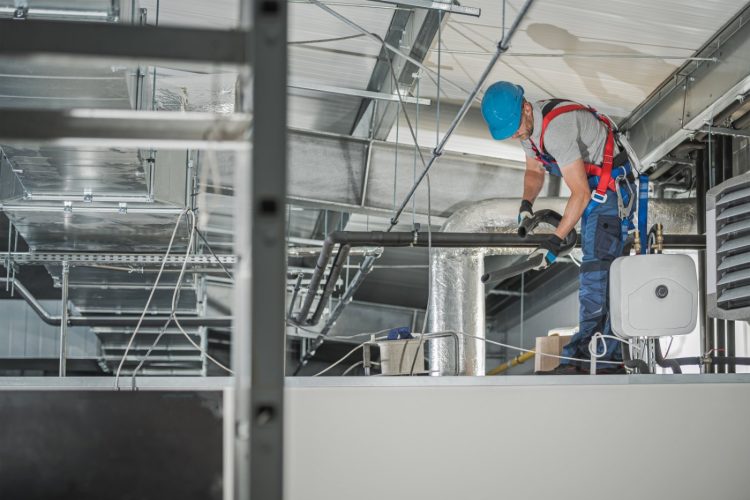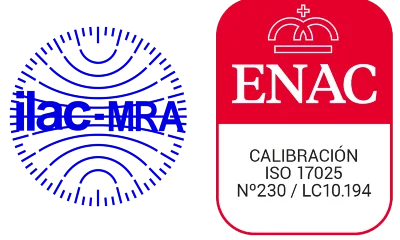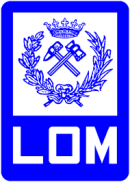What is an HVAC system?
HVAC (Heating, Ventilation, and Air Conditioning) signifies heating, ventilation and air conditioning. HVAC systems provide heating and cooling to residential and commercial buildings. Today you can find HVAC systems everywhere from single-family homes to office buildings, businesses, hospitals, public buildings, showrooms or ships. Its function is to guarantee environmental comfort in accordance with the requirements established by the builder and the user.
Increasingly popular in new construction, these systems use fresh outdoor air to provide high indoor air quality. V in HVAC, or ventilation, is the process of replacing or exchanging air within a space. This device allows for better indoor air quality and involves the removal of moisture, smoke, odors, heat, dust, airborne bacteria, carbon dioxide and other gases, as well as oxygen replenishment. H and A correspond to temperature control, both in winter and summer.
How does an HVAC system work?
The three main functions of an HVAC system are interrelated, especially in providing acceptable air quality and thermal conditions. The heating and air conditioning system is often one of the most complicated and extensive systems in homes and businesses, but when it stops working it is quickly noticed.
There are nine parts to an HVAC system that you should be familiar with: the air return, filter, exhaust vents, ductwork, electrical, outdoor unit, compressor, coils and blower.
1. Filter
The filter is the second part of the air return through which the air is sucked in. Tip: Be sure to change filters regularly to keep your system in good working order.
2. Exhaust outlets
Other parts of the system are the exhaust outlets where the smoke created by the heating system is expelled. Tip: Check the chimney flue or vent stack annually and tune it if necessary.
3. Ducts
Ducts are the channels through which heated or cooled air passes. Tip: Have your ducts cleaned every two to five years to keep everything in working order.
4. Electrical Elements
This part of the system can be complicated, and often problems originate here first.
5. Outdoor unit
This is probably the part of the system you think of when someone mentions an HVAC system. The outdoor unit houses the fan that provides the airflow.
6. Compressor
As part of the outdoor unit, the compressor is responsible for converting the refrigerant from gas to liquid and sending it to the coils. Tip: If something isn’t quite right, check your compressor. It is often the cause of many system failures.
7. Coils
Normally another part of the outdoor unit, the coils cool the air as it passes through with a little help from the refrigerant.
8 . Blower
The blower draws the hot air through the main section of the unit.
What does an HVAC system include?
Since we already know that HVAC stands for heating, ventilation and air conditioning, we know that those are the three main parts included in the complete system.
The heating element is usually a furnace or boiler. It includes a piping system for the fluid carrying the heat or ductwork if working with a forced air system.
The ventilation element can be natural or forced, and when it is forced it is often also used to clean the air.
The third and final element of an HVAC system is air conditioning, which is the exact opposite of heating. Its main objective is to eliminate the heat inside the house.
What is the difference between HVAC and air conditioning?
Air conditioning is actually the last part of what HVAC stands for, but they are often used interchangeably in reference to any type of heating or cooling device in a home. Think of HVAC as the general term and air conditioning as a piece of the system.
What can Gometrics do?
Gometrics offers room and equipment qualification services.
To ensure the correct operation of the installation, it is necessary to check the flow rate in the ducts, so as to provide the correct amount of renewed air and to establish a certain temperature and humidity of the premises. Thermometers and thermostats are used to monitor the temperature in the rooms and a hygrometer is used to calculate the humidity. In addition, a structural analysis of the premises or plant is carried out to verify the correct operation of the equipment. The information collected is compared with the data used during the plant design phase. Calculations are made on the basis of new requirements.
The calibration of the HVAC system, through the detection of environmental parameters such as temperature, humidity, flow rate, air flow, excess pressure and percentage of fresh air, allows to detect if the plant is working properly or if it needs a maintenance intervention.
Our services
- Analysis of environmental parameters
- Review of the installation
- Measurement of air flow and calculation of air changes
- Differential pressure measurement between rooms
- Checking the integrity of absolute filters
- Particle counting in clean rooms
- Measurement of temperature and relative humidity of rooms
- Calibration of all temperature probes, flowmeters and other elements that come into play in the whole installation.
Request a quote for a complete overhaul of your HVAC systems







